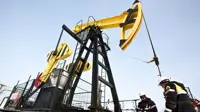Shipping ministry relaxes tariff norms for major ports
31 Jul 2013
The shipping ministry has issued liberalised guidelines for determination of tariff at major ports in the country, in a bid to improve investment flows to the port sector.
 The revised guidelines give individual ports more freedom in fixing tariffs and also allow indexing of tariffs to inflation.
The revised guidelines give individual ports more freedom in fixing tariffs and also allow indexing of tariffs to inflation.
Tariff guidelines 2013 will apply to new port projects and projects already awarded will not be covered under the new guidelines, the shipping ministry said in a release.
The new tariff guidelines will have prospective effect and the earlier guidelines issued in 2005 and 2008 will continue to apply to projects bid under these guidelines, the ministry said.
While the Tariff Authority for Major Ports (TAMP) will first set the reference tariff for a particular commodity at a major port, this will, however, be the highest prevailing rate for that commodity in any port that handles the commodity.
If that commodity is not handled at that port, the highest tariff in the nearest major port will be taken as reference tariff.
The reference tariff will be applicable for the next five years. It will, however, be indexed to inflation up to 60 per cent of wholesale price index.
TAMP will also notify performance standards of facilities and services offered at the port projects. Both the `reference tariff' and `performance standards' will be mentioned in the bid document and the bids will be evaluated on the basis of reference tariff.
While the `Indexed Reference Tariff' would be the ceiling tariff in the first year of operation, port operator would be free to propose tariff higher than the indexed reference tariff from the second year subject to a cap of 15 per cent over and above the indexed reference tariff.
Ports will also be allowed to revise the tariffs upward once in each financial year.
Ports, however, should send proposals for increase in tariffs to TAMP, detailing achievements in performance standards in the previous year. These should be drawn from an approved panel and certified by an independent engineer.
If ports fail to achieve performance standards as per the concessionaire agreement, TAMP may not consider any hike in tariff.
Revenue sharing will be as per the concession agreement.
Major port trusts should draw performance standards for the new berths based on the performance standards achieved by similar public-private partnership (PPP) berths.
If the PPP operator fails to achieve performance standards the stakeholder can make a representation to TAMP, which in turn, will hold an inquiry and give its findings to the major port trust.
Major port trusts will be bound to take action on the findings as per concession agreement.
"The new guidelines allow the competitive market forces to play a greater role in tariff determination and impart flexibility,'' union minister for shipping G K Vasan said while addressing a press conference in Mumbai after making an announcement on the new guidelines.
''This is a major step forward," Vasan added.
The new guidelines are in response to feedback received from various stakeholders, who felt the existing regulations issued by the `Tariff Authority for Major Ports' were detrimental to the growth of the sector. Port operators also felt there was no level playing field between the major ports and the non-major ports, as the latter were outside the ambit of TAMP.
Vasan said an inter-ministerial task force headed by B K Chaturvedi, member, Planning Commission, had looked into the issue in a holistic manner and given its recommendations.
"The new guidelines are being issued after extensive consultations with all the stakeholders and I hope that they will encourage more private investment in port projects," the minister added.
The shipping ministry has set an ambitious target to award 30 port projects, involving investment of approximately Rs25,000 crore, during 2013-14. This is expected to add 288 million tonnes of annual handling capacity across major ports in the country.
This includes Rs8,000 crore big-ticket project of the fourth container terminal at the Jawaharlal Nehru Port Trust (JNPT), in Navi Mumbai.
During 2012-13 the shipping ministry awarded 32 port projects involving investment of Rs6,765 crore, entailing capacity addition of 136 MTPA.
The new guidelines for determination of tariff for projects and major ports come into force with immediate effect. Besides providing for tariffs to be indexed to inflation, they also set out performance standards for port projects to improve accountability and ensure improved quality of service. The focus of TAMP will now gradually shift to performance monitoring and redressing grievances.








.webp)












